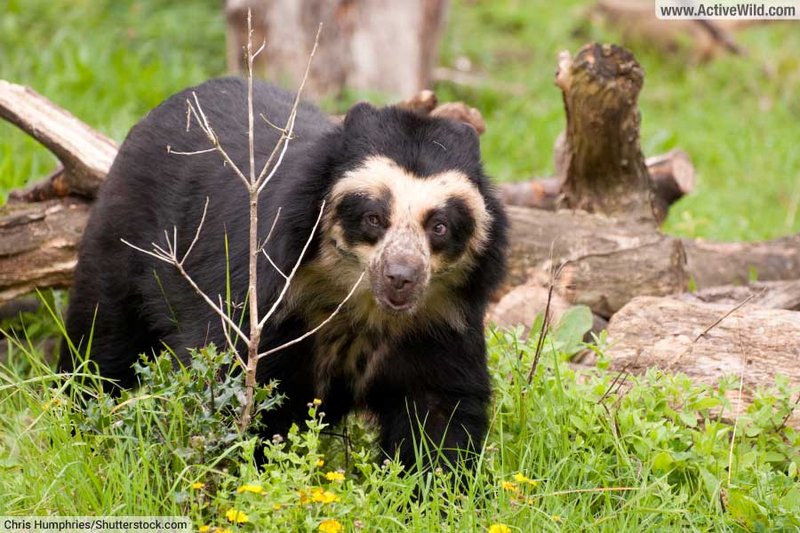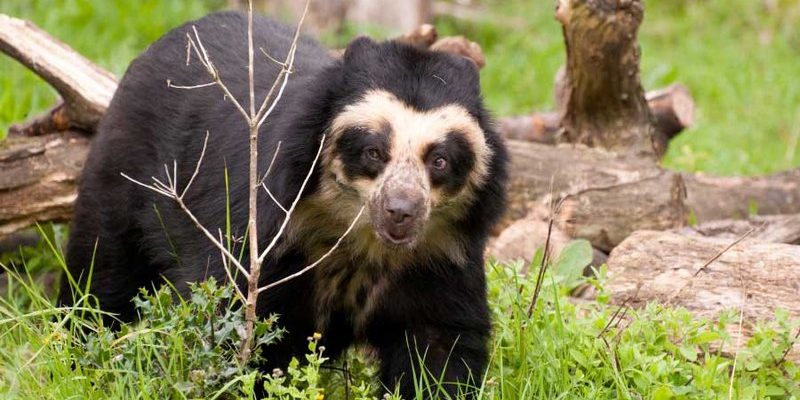
Let’s dive into the world of bears and similar species—animals that might be different at first glance but share traits with the spectacled bear. We’ll explore these fascinating creatures, highlighting their characteristics and how to distinguish them. So, grab your favorite drink, settle in, and let’s unravel the animal kingdom!
The Spectacled Bear: A Quick Overview
Before we get into the other animals, let’s take a moment to appreciate the spectacled bear itself. Native to the Andes mountains of South America, these bears have a particularly endearing look thanks to their markings that resemble spectacles around their eyes. They usually have a dark fur coat with lighter patches, making them quite distinctive.
Spectacled bears are mostly herbivorous, enjoying diets rich in fruits, leaves, and flowers. Despite their size, they’re known for their gentle behavior, often climbing trees to search for food or to escape from threats. It’s important to know that while they’re not considered endangered, their habitat is threatened due to deforestation and human activities.
1. American Black Bear
Let’s kick things off with the American black bear. This species is widespread across North America and can be seen in various habitats, from forests to swamps.
What sets them apart from the spectacled bear is their color; they can range from black to brown, cinnamon, and even blonde! They have a more rounded face and a broader, stockier build. You might also notice they have a more pronounced snout compared to the spectacled bear.
Like the spectacled bear, American black bears are omnivores, but they’re often more opportunistic feeders. They’ll nab anything from berries to garbage if the chance arises!
2. Asiatic Black Bear
The Asiatic black bear, also known as the moon bear due to the distinctive white crescent on its chest, is another bear that shares some similarities with the spectacled bear. These bears inhabit forested areas in Asia, ranging from the Himalayas to Japan.
When comparing them, you’ll notice the Asiatic black bear has a more pronounced coat of fur and a more elongated snout. They’re also known for their climbing skills, likely due to their forest-dwelling lifestyle, much like the spectacled bear. Their diet includes fruits, insects, and small mammals, making them quite the versatile eaters.
3. Andean Bear
Often considered synonymous with the spectacled bear, the Andean bear is a direct relative. They share many traits, including their diet and habitat.
However, if you closely observe, the Andean bear might have more variation in size and fur color. Their facial markings can also differ considerably across individuals, giving each one a unique charm. This variation is a lovely reminder that even within species, there’s a bit of personality!
4. Sun Bear
Next up is the sun bear, the smallest bear species and often referred to as “honey bear.” They inhabit the tropical forests of Southeast Asia and are known for their short, sleek fur and a very distinctive orange-yellow chest patch.
While they might be smaller than the spectacled bear, their curious nature and omnivorous diet can make them somewhat similar. One major difference? Sun bears are often more aggressive when it comes to securing their food, including raiding beehives for honey—a sweet treat they can’t resist!
5. Spectacled Caiman
Switching gears a bit, let’s talk about the spectacled caiman. Though not a bear, this reptile shares a whimsical connection thanks to its name, which comes from the same “spectacles” that characterize the spectacled bear.
These caimans are much smaller than bears, with their distinctive features being the bony ridges between their eyes. They often dwell in freshwater habitats, laying their eggs on land. While they aren’t closely related, the visual similarities in name might tickle your fancy!
6. Giant Panda
Ah, the giant panda! Known worldwide for their black and white fur and bamboo diet, these big bears are another comparison point. Though they’re much larger and bulkier than the spectacled bear, both enjoy climbing trees and have a herbivorous diet.
Pandas are also more social than spectacled bears, often living in small groups. You might notice they have rounder faces and larger bodies, making them appear quite different. But their gentle nature makes them a charming parallel!
7. Grizzly Bear
Then there’s the grizzly bear, a major player among North American wildlife. They’re larger and stockier than the spectacled bear, and you’ll often find them roaming the wilderness in search of fish and berries.
Grizzlies can be identified by their hump on their backs and the distinct claws used for digging. While they may share some habitat preferences with the spectacled bear, their behavior can be quite different, as grizzlies are known to be more territorial.
8. Eurasian Brown Bear
The Eurasian brown bear is another relative worthy of note. These bears are found across Europe and Asia and are typically brown with varying shades. Like their grizzly cousins, they can be much larger than spectacled bears and have a broader head and longer claws.
Diet-wise, they’re also omnivorous, but during the spring, they focus intensely on foraging for vegetarian options. You might think of them as the more rugged cousin who enjoys a hearty meal!
9. Koala
Okay, let’s get a tad adventurous with the koala. While they might not be bears at all, they share a penchant for tree-dwelling and a herbivorous diet. Native to Australia, koalas are known for their cute, cuddly appearance and their exclusive diet of eucalyptus leaves.
Though they’re marsupials and not bears, the way they cling to trees is reminiscent of the climbing behaviors seen in spectacled bears. They’re also nocturnal, which is a fun contrast to the diurnal habits of the spectacled variety!
10. Red Panda
Finally, we have the red panda, a small, tree-climbing mammal that, at first glance, resembles a miniature bear. Found in the eastern Himalayas and southwestern China, these creatures are often mistaken for their larger relatives due to their similar names and behavior.
Red pandas are more agile and have a flat face, with red-brown fur and a bushy tail that helps them balance in trees. Their diet is also primarily herbivorous, delighting in bamboo just like giant pandas.
Wrapping Up Our Animal Adventure
It’s pretty fascinating to explore different animals that share features with the spectacled bear. From other bear species to distant relatives like the koala and red panda, each one has its own unique story and characteristics. Understanding how to tell them apart adds a layer of appreciation for the diversity in the animal kingdom.
Next time you think about the spectacled bear, you might also ponder its unique cousins and friends in the wild. Who knows? You might spot one on your next nature adventure! Remember, each creature plays its part in the ecosystem, and understanding them helps us protect their habitats for future generations.

